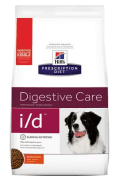Liver Disease
(Acute)Acute (rapid) liver disease occurs due to a sudden loss of liver function. The liver functions in many ways:
The liver detoxifies bacteria and toxin from the intestinal system and excretes these toxins into the faeces or through the kidneys in to the urine.
It also produces proteins and sugars needed for the body to function. Some of these factors are chemicals that aid in the clotting process, proteins that carry needed nutrients and sugars to the cell, proteins that function in metabolic processes, and many other functions.
Further, the liver metabolizes the breakdown of red blood cells and their contents (hemoglobin). The hemoglobin, which is the oxygen-carrying component of the red blood cell, is turned into a pigment called Bilirubin (Yellow). It is this pigment that builds up in the body when the liver does not function and creates Jaundice, yellow appearance of tissue.
The disease can come on rapidly and make your pet very ill.
This causes several clinical signs:
- Acute onset of depression and illness
- Jaundice (Icterus)
- Diarrhoea
- Vomiting
- Seizure
- Coma
- Dementia
- Blindness
Cause of Disease: Acute hepatic disease is caused by sudden injury to the cells of the liver.
This can be caused by:
- Shock: E.G: Heat stroke, massive bacterial infection (sepsis)
- Infectious Agents: E.G: Infectious Hepatitis Virus
- Drugs: E.G: Anti-convulsants, anti-microbials, toxins
The disease tends to affect dogs more than cats. There are no breed or sex predilections.
Diagnosis:
Since acute liver disease can be caused by many other diseases (e.g. infection, cancer, inflammation, fatty infiltration of the liver (Hepatic lipidosis)…), your veterinarian may suggest the following diagnostic tests:
- Diagnostic blood work including a complete blood count and chemistry will help your veterinarian to determine if there is infection, disease of the kidney, liver, pancreas or metabolic disease present.
- Urinalysis: This will allow your veterinarian to assess the kidney’s ability to concentrate urine and expel toxins as well as check for urinary tract infections.
- Infectious disease titer screens: Your veterinarian may suggest testing for specific disease in the geographical area that could be linked to an acute liver disease. I.e. Histoplasmosis, Blastomycosis, Feline Leukaemia, Feline Immunodeficiency Virus, Feline Infectious Peritonitis.
- X-rays: X-rays of the chest and abdomen may be suggested to see if there is evidence of an underlying infectious process, organ disease, possible bleeding or tumour that could be producing the clinical signs.
- Ultrasound: Ultrasound imaging can aid in imaging of the liver and the rest of the abdominal organs and in some cases can identify a potential mass, free fluid in the abdomen, or suggestions of organ disease. Ultrasound guided fine needle aspirate of the liver may also be suggested to help your veterinarian determine the type of disease affecting your pet.
- Surgical exploratory / biopsy: In some cases, a surgical biopsy or removal of part of the liver will give your veterinarian the best information, allow removal of the tumour and the ability to inspect the abdomen for other diseases affecting other abdominal organs and intestines.
Your veterinarian may suggest combinations of diagnostic tests or other tests not listed dependent on how your animal presents in physical examination, outcome of early diagnostics and response to treatment.
Treatment:
Treatment is focused on supporting the body with fluid and nutrition while trying to aid the liver in removing the toxins that are building up.
Treatment protocols are:
- Fluids: Usually intravenous fluids are used to help rehydrate and dilute the toxins within the body, since the animal is not feeling up to eating or drinking.
- Anti-emetics: Drugs which help decrease vomiting and nausea caused by secondary upsets to the Gastro-intestinal tract.
- Drugs which decrease stomach acid production: Help to decrease stomach acidity and decrease nausea
- Lactulose: This drug helps to decrease ammonia in the early intestinal system, which would normally be absorbed and detoxified by the liver.
- Fresh Whole Blood or Plasma may need to be given to help transfuse blood-clotting factors normally produced by the liver.
- Diet: Prescription Diet® l/d® was created by veterinarians specifically for the nutritional management of liver disorders that cause reduced liver function. It is highly digestible, with high quality protein sources that reduce the liver workload and aid in the regeneration of liver tissue. Added antioxidant nutrients like Vitamin E, Vitamin C and selenium, help combat oxidative stress.
Your veterinarian may suggest combinations of treatments not listed dependent on the outcome of early diagnostics and response to treatment.
Home care:
- Diet: Small feedings of a bland food diet such as Hill’s diet l/d
- Medication:
- Home treatment: Strict Confinement and Rest
Please contact us immediately if:
- Vomiting or diarrhoea continue
- Decreased appetite
- Continued depression
- Any overall change in your animal’s health.

